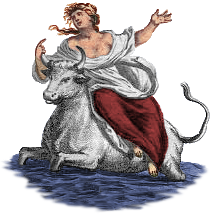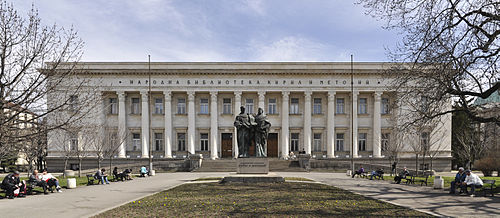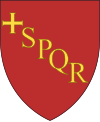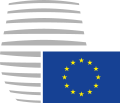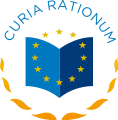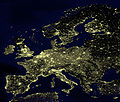Portal:European Union
Introduction
The European Union (EU) is a supranational political and economic union of 27 member states that are located primarily in Europe. The Union has a total area of 4,233,255 km2 (1,634,469 sq mi) and an estimated total population of over 449 million. The EU has often been described as a sui generis political entity combining the characteristics of both a federation and a confederation. Containing 5.8% of the world population in 2020, EU member states generated a nominal gross domestic product (GDP) of around US$16.6 trillion in 2022, constituting approximately one sixth of global nominal GDP. Additionally, all EU states except Bulgaria have a very high Human Development Index according to the United Nations Development Programme. Its cornerstone, the Customs Union, paved the way to establishing an internal single market based on standardised legal framework and legislation that applies in all member states in those matters, and only those matters, where the states have agreed to act as one. EU policies aim to ensure the free movement of people, goods, services and capital within the internal market; enact legislation in justice and home affairs; and maintain common policies on trade, agriculture, fisheries and regional development. Passport controls have been abolished for travel within the Schengen Area. The eurozone is a group composed of the 20 EU member states that have fully implemented the economic and monetary union and use the euro currency. Through the Common Foreign and Security Policy, the union has developed a role in external relations and defence. It maintains permanent diplomatic missions throughout the world and represents itself at the United Nations, the World Trade Organization, the G7 and the G20. Due to its global influence, the European Union has been described by some scholars as an emerging superpower. In 2012, the EU was awarded the Nobel Peace Prize. The United Kingdom became the only member state to leave the EU, in 2020; ten countries are aspiring or negotiating to join it. (Full article...) Selected article The European Parliament (Europarl or EP) is the directly elected parliamentary body of the European Union. Together with the Council of the European Union (the Council), it forms the bicameral legislative branch of the Union's institutions and has been described by some one of the most powerful legislatures in the world. The Parliament, together with the Council, form the highest legislative body within the Union. This is only within the competencies of the European Community being limited to specific policy areas, however Union law does override national law. The Parliament is composed of 785 MEPs (Member of the European Parliament) who serve the second largest democratic electorate in the world (after India) and the largest trans-national democratic electorate in the world (492 million). Selected pictureThe SS. Cyril and Methodius National Library is the national library of Bulgaria. Founded on 4 April 1878, it was named after Saints Cyril and Methodius, who are credited with the creation of the Cyrillic script used in Bulgarian. The building pictured was finished in 1953.
Did you know?...that within the Eurozone the European Central Bank has the exclusive authority to set monetary policy? ...that Greenland and United Kingdom are the only countries to ever leave the European Union? Selected cityRome is the capital of Italy and of its region, called Lazio. It is located across the confluence of the Tiber and Aniene rivers. It was once the capital of the Roman Empire, the most powerful, largest and longest lasting empire of classical Western civilization. The Vatican, a sovereign enclave within Rome, is the seat of the Roman Catholic Church and the home of the Pope. Rome is the largest comune in Italy and it is also one of the largest European capital cities in land area, with an area of 1,285 square kilometers. Within the city limits, the population is about 2.5 million; almost 3.8 million live in the urbanised area of Rome, as represented by the province of Rome, making it second in population to Milan. With a gross domestic product of €97 billion in the year 2005, Rome produced 6.7% of Italy's GDP. General imagesThe following are images from various European Union-related articles on Wikipedia.
TopicsFeatured contentFeatured articles
Featured lists
Featured contentGood articles
CategoriesRelated portalsAssociated WikimediaThe following Wikimedia Foundation sister projects provide more on this subject:
Discover Wikipedia using portals |



